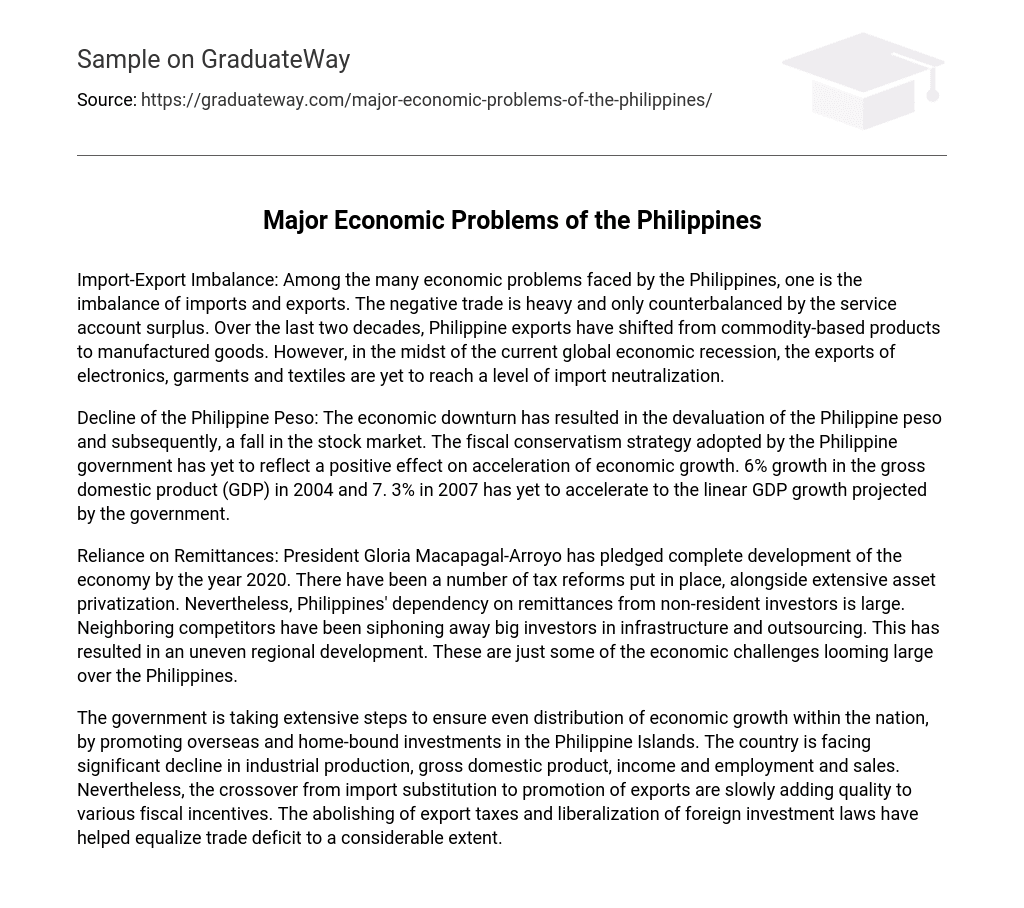The economic problem in the Philippines pertains to an unevenness between imports and exports. Regrettably, the surplus from service accounts does not sufficiently offset the unfavorable trade scenario. In the past two decades, there has been a transition in Philippine exports away from commodities towards manufactured goods. Nevertheless, despite this shift, electronics, garments, and textiles have not achieved a level where they can counterbalance imports – particularly amid the ongoing worldwide economic recession.
The economic downturn has led to a decline in the Philippine Peso, causing currency devaluation and a decrease in the stock market. Despite implementing fiscal conservatism, the government’s efforts have not positively impacted economic growth acceleration. The projected linear GDP growth set by the government has fallen short, with GDP growth rates of 6% in 2004 and 7.3% in 2007.
President Gloria Macapagal-Arroyo is dedicated to achieving full economic development by 2020. This goal will be accomplished through the implementation of tax reforms and asset privatization. However, the Philippines heavily relies on remittances from non-resident investors. Additionally, competition from neighboring rivals who are attracting large investments in infrastructure and outsourcing poses a significant threat to the country’s economy. As a consequence, there is an imbalance in regional development.
The government of the Philippines is implementing measures to foster equitable economic development in the nation by stimulating investments from both foreign and domestic origins. At present, there is a downturn observed in numerous economic markers including industrial production, gross domestic product (GDP), income, employment, and sales. Nonetheless, the transition from import substitution to export promotion is progressively enhancing fiscal benefits. The removal of export levies and easing of restrictions on foreign investment have played a noteworthy role in diminishing the trade deficit.





